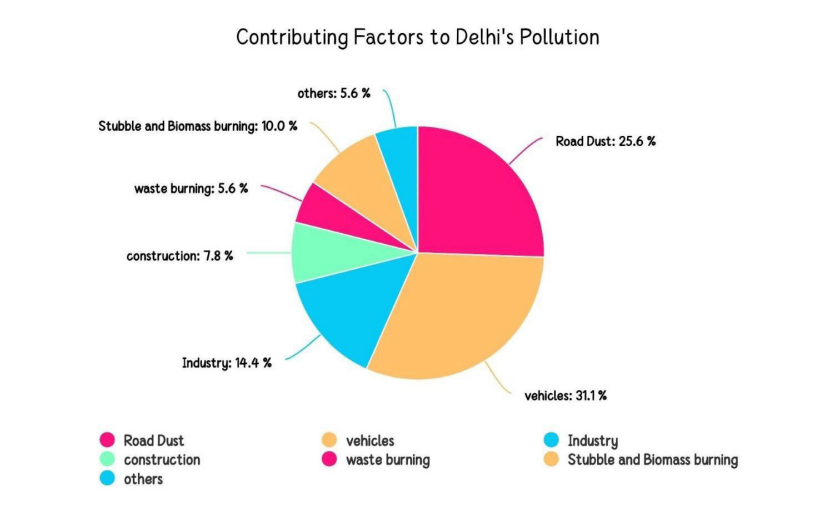The persistent challenge of extreme particulate pollution in the Delhi National Capital Region (NCR) has become a critical and enduring issue, capturing the attention of environmentalists, policymakers, and the public alike. Despite concerted efforts to address the problem, the region continues to grapple with dangerously high levels of particulate matter, posing severe risks to public health and the environment. The multifaceted nature of this predicament stems from a complex interplay of factors, including vehicular emissions, industrial activities, agricultural practices, and meteorological conditions. This introductory paragraph seeks to unravel the layers of complexity that contribute to the enduring problem of extreme particulate pollution in Delhi NCR, shedding light on the challenges that persist and hinder effective mitigation strategies.
Contents
Answer
Delhi’s air pollution (Average annual PM2.5 concentration in 2022-98.8 μg/m³) is more than four times higher than the WHO’s recommended safe limit (25 μg/m³) Extreme particulate pollution- festering issue in Delhi NCR region because of following reasons-
- Delhi is located in a bowl-shaped valley, which traps pollutants.
- Location away from sea discourage dissipation of pollutants through diurnal wind circulation
- High continentality, harsh winters, temperature inversion traps pollutants near ground eg. formation of pollution dome in Delhi during winters large number of vehicles on the road, which are a major source of air pollution. As per Delhi
- Transport Department, there were over 1.1 crore (11 million) registered vehicles in Delhi in 2022.

- Major industrial centre like Okhla Narela, Mayapuri thus industrial emissions
- Delhi is a rapidly growing city; construction activity is another major source of air pollution.
- Prone to dust storms, which can further worsen air pollution.
- Stubble burning in neighbouring states of Punjab and Haryana contributes to air pollution in Delhi.
Odd-Even Scheme, Anti-Dust Campaign, ‘Green Delhi’ campaign, Graded Response Action Plan (GRAP), The National Air Quality Monitoring Programme (NAQM), Stringent construction guidelines and a comprehensive Electric Vehicle (EV) Policy are steps in the right direction to curb high pollution levels in Delhi.
In case you still have your doubts, contact us on 9811333901.
For UPSC Prelims Resources, Click here
For Daily Updates and Study Material:
Join our Telegram Channel – Edukemy for IAS
- 1. Learn through Videos – here
- 2. Be Exam Ready by Practicing Daily MCQs – here
- 3. Daily Newsletter – Get all your Current Affairs Covered – here
- 4. Mains Answer Writing Practice – here


